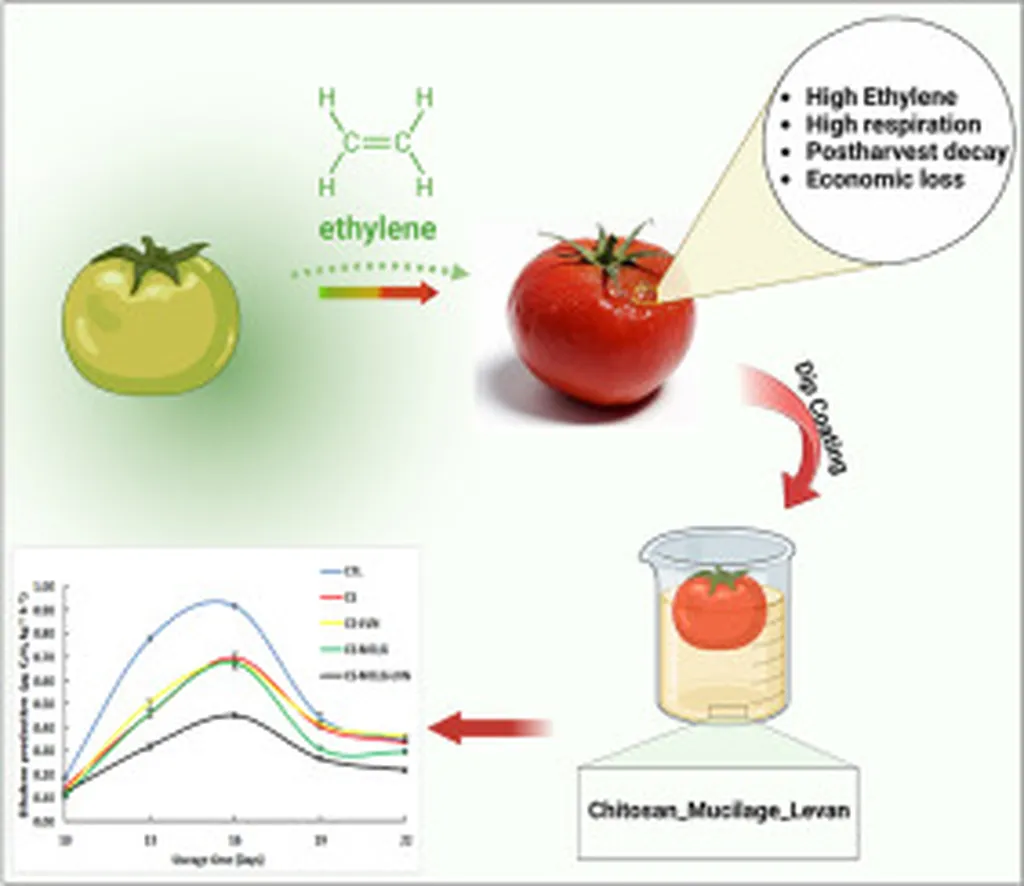In the quest to extend the shelf life and maintain the quality of fresh produce, researchers from Handan University and the Hebei Academy of Agricultural and Forestry Sciences have made a significant stride. A recent study published in *Shipin Kexue* (which translates to *Food Science*) explores the effects of combining chitosan (CTS), nisin, and melatonin (MT) on the quality and softening of “Hongbeibei” small-fruited tomatoes. The findings could have profound implications for the agricultural and food preservation industries.
The research, led by LI Dan and colleagues, investigated how these treatments affect the tomatoes’ quality, color, decay incidence, mass loss rate, sensory score, texture, softening, and antioxidant properties during storage. The tomatoes were treated with 1.5% CTS, 1.5% CTS + 0.4 g/L nisin, and 1.5% CTS + 0.4 g/L nisin + 150 μmol/L MT, and then stored at 25°C for up to 10 days.
The results were promising. Compared to CTS alone, the combination treatments significantly reduced mass loss and decay incidence, while maintaining higher sensory scores. “The combined treatments not only delayed the reduction in fruit hardness but also enhanced fruit elasticity and adhesiveness during the early storage period,” noted LI Dan, the lead author of the study.
One of the most intriguing findings was the dual regulatory mechanism by which the combined treatments delayed cell wall degradation. The treatments reduced the rate of protopectin decomposition and inhibited the accumulation of soluble pectin, thereby maintaining the tomatoes’ structural integrity. “This dual approach is crucial for preserving the texture and quality of the fruit,” explained LI Dan.
The study also revealed that the combined treatments postponed the peak time of total phenol content, DPPH radical scavenging rate, and FRAP, indicating enhanced antioxidant activity. The CTS + nisin + MT treatment, in particular, showed a significant increase in total phenol content and DPPH radical scavenging rate during the late storage period.
Moreover, the combined treatments deferred the peak time of titratable acid and vitamin C (VC), with the CTS + nisin + MT treatment exhibiting a substantial increase in VC content. “These findings suggest that the combined treatments can significantly extend the shelf life and maintain the nutritional quality of the tomatoes,” said LI Dan.
The implications of this research are far-reaching. For the agricultural sector, these findings could lead to the development of more effective preservative coatings that extend the shelf life of fresh produce, reducing food waste and improving marketability. For consumers, this means access to fresher, higher-quality produce for a more extended period.
As the global demand for fresh, high-quality produce continues to grow, innovations in food preservation are more critical than ever. This study provides a theoretical basis for developing preservative coatings with good controlled-release effects, paving the way for future advancements in the field.
In the words of LI Dan, “This research is just the beginning. We hope that our findings will inspire further studies and practical applications in the agricultural and food preservation industries.” With the potential to revolutionize the way we preserve and enjoy our fresh produce, this study is a significant step forward in the quest for sustainable and effective food preservation solutions.

